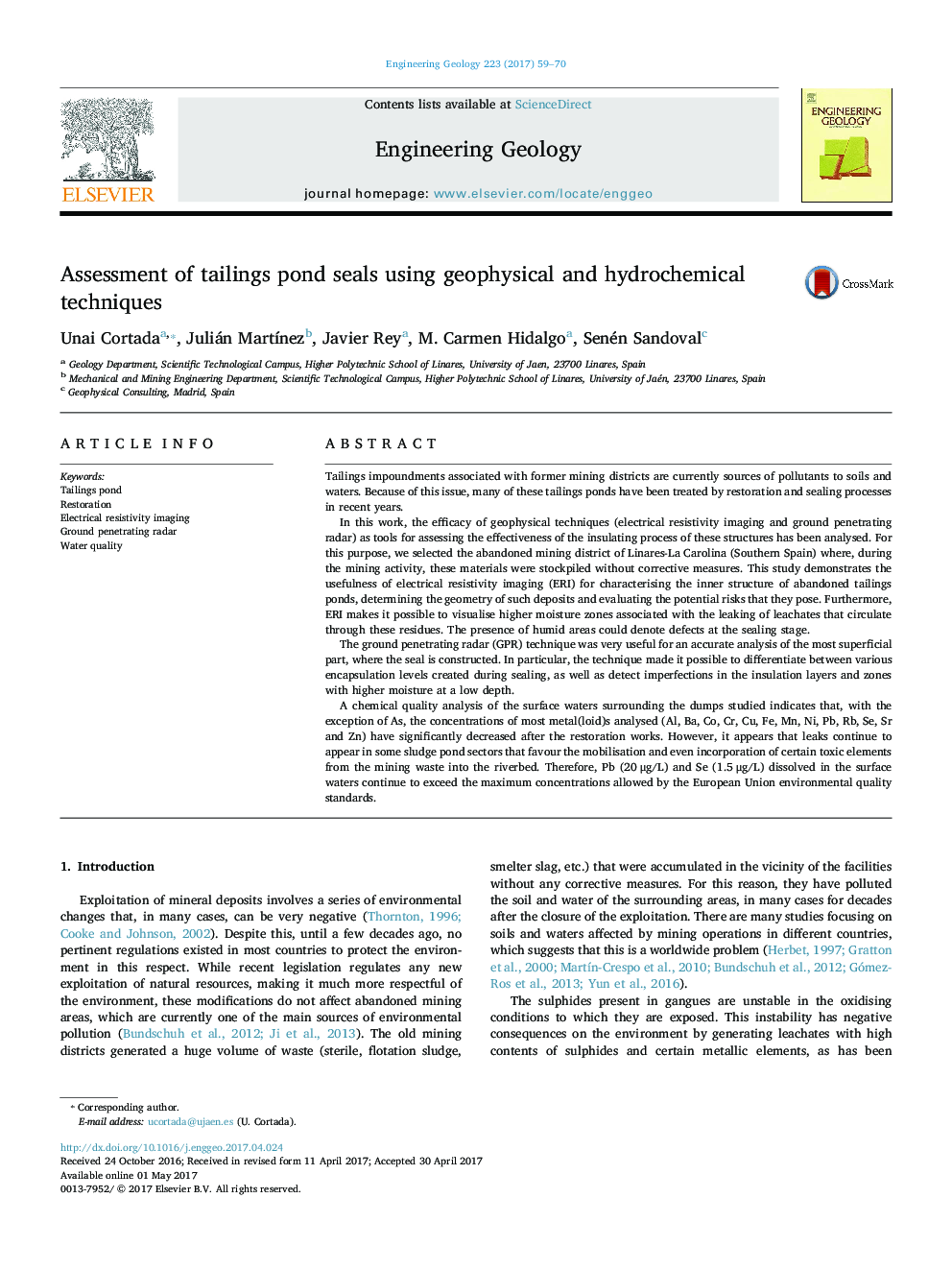| کد مقاله | کد نشریه | سال انتشار | مقاله انگلیسی | نسخه تمام متن |
|---|---|---|---|---|
| 5787575 | 1641762 | 2017 | 12 صفحه PDF | دانلود رایگان |
- Abandoned mines constitute sources of deterioration of water and soil quality.
- ERI makes it possible to reconstruct tailings pond morphology.
- ERI and GPR enable higher moisture zones to be identified.
- Presence of humid areas could denote defects at the sealing stage.
- The effectiveness of the sealing process can be tested using hydrochemical parameters.
Tailings impoundments associated with former mining districts are currently sources of pollutants to soils and waters. Because of this issue, many of these tailings ponds have been treated by restoration and sealing processes in recent years.In this work, the efficacy of geophysical techniques (electrical resistivity imaging and ground penetrating radar) as tools for assessing the effectiveness of the insulating process of these structures has been analysed. For this purpose, we selected the abandoned mining district of Linares-La Carolina (Southern Spain) where, during the mining activity, these materials were stockpiled without corrective measures. This study demonstrates the usefulness of electrical resistivity imaging (ERI) for characterising the inner structure of abandoned tailings ponds, determining the geometry of such deposits and evaluating the potential risks that they pose. Furthermore, ERI makes it possible to visualise higher moisture zones associated with the leaking of leachates that circulate through these residues. The presence of humid areas could denote defects at the sealing stage.The ground penetrating radar (GPR) technique was very useful for an accurate analysis of the most superficial part, where the seal is constructed. In particular, the technique made it possible to differentiate between various encapsulation levels created during sealing, as well as detect imperfections in the insulation layers and zones with higher moisture at a low depth.A chemical quality analysis of the surface waters surrounding the dumps studied indicates that, with the exception of As, the concentrations of most metal(loid)s analysed (Al, Ba, Co, Cr, Cu, Fe, Mn, Ni, Pb, Rb, Se, Sr and Zn) have significantly decreased after the restoration works. However, it appears that leaks continue to appear in some sludge pond sectors that favour the mobilisation and even incorporation of certain toxic elements from the mining waste into the riverbed. Therefore, Pb (20 μg/L) and Se (1.5 μg/L) dissolved in the surface waters continue to exceed the maximum concentrations allowed by the European Union environmental quality standards.
Journal: Engineering Geology - Volume 223, 7 June 2017, Pages 59-70
